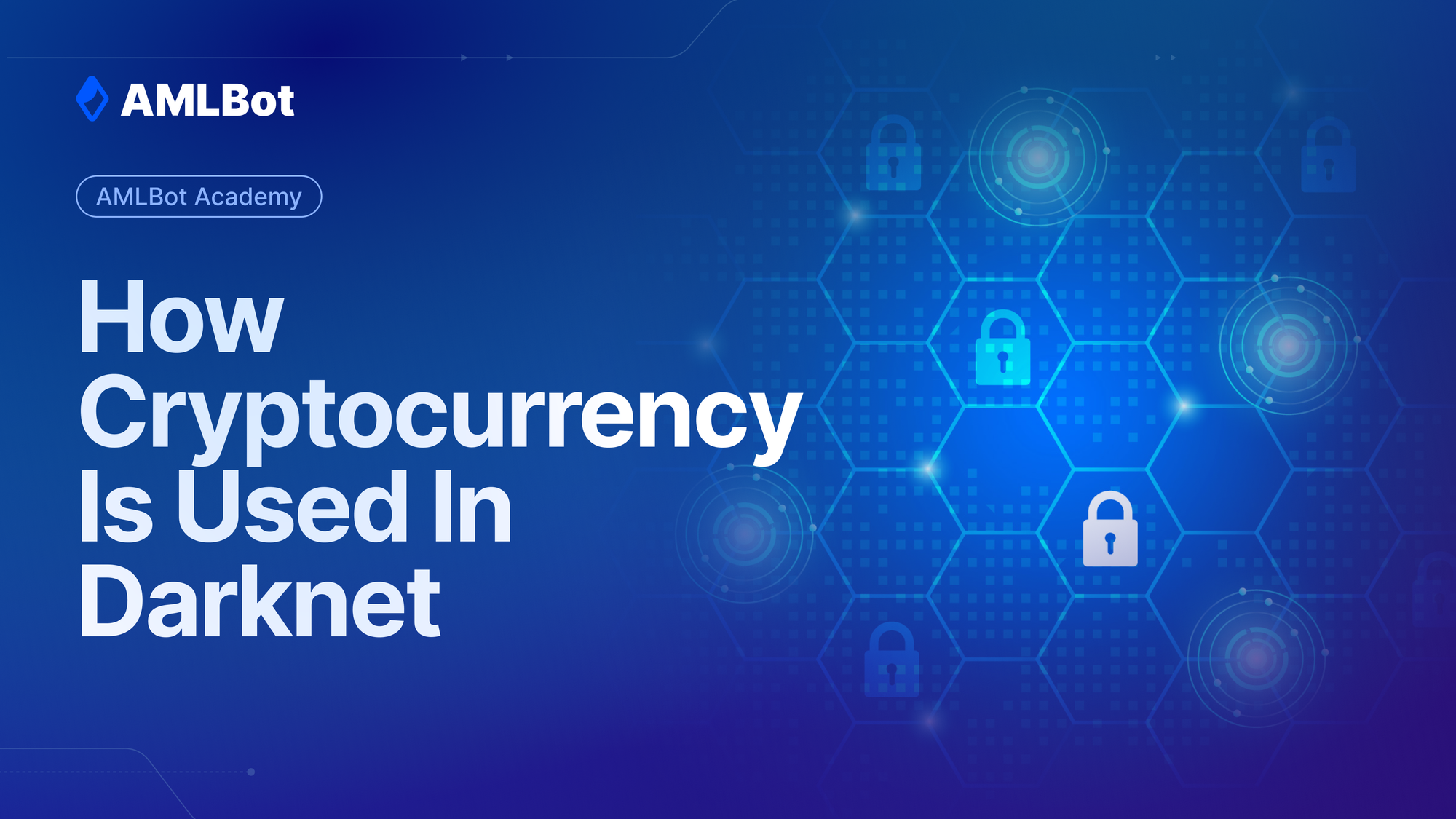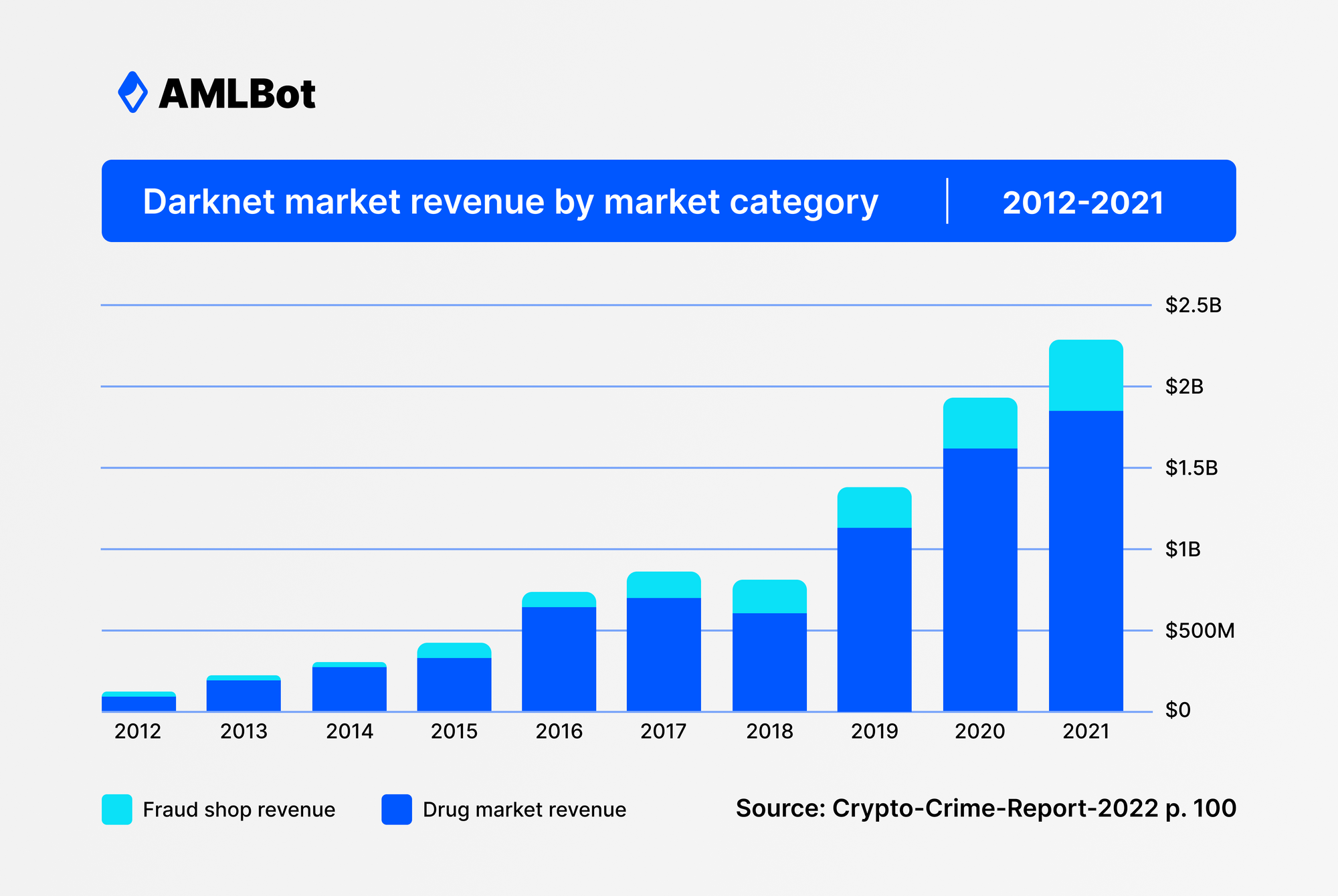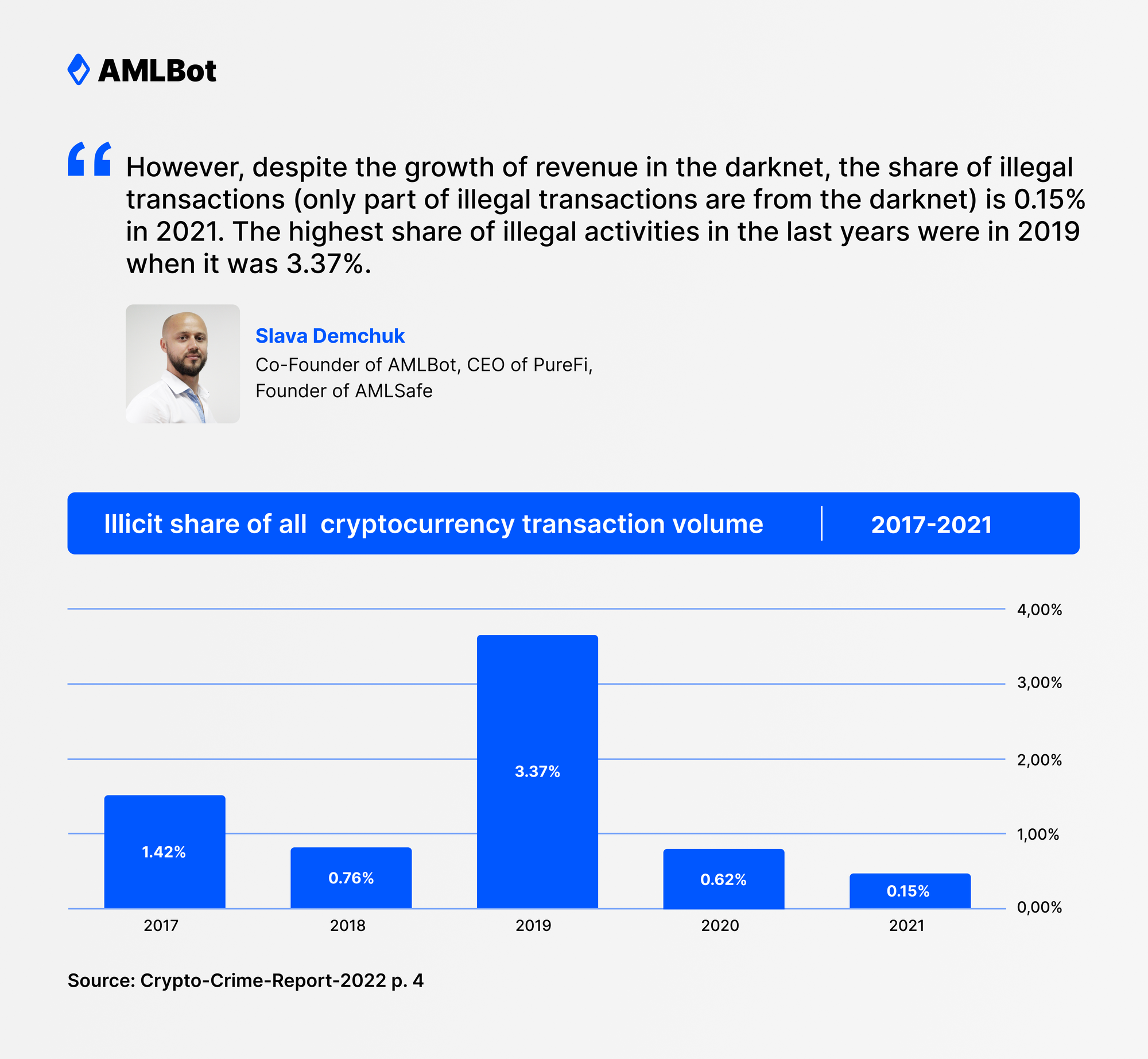How Cryptocurrency Is Used In Darknet

Cryptocurrency is replacing fiat money in several aspects. It was first introduced as a digital currency to replace fiat and aid individuals in peer-to-peer transfers by eliminating centralized entities that hold people's money and oversee their transactions. Crypto users get complete control over their funds and a greater level of privacy while transacting than with fiat. Transacting with cryptocurrency does not need identity verification like banks and institutions, and those on the other side of the transaction do not necessarily need to know who you are. Moreover, users can transact without permission from authorities and institutions – anybody can send and receive funds with cryptocurrency.
It opens many avenues for those who want to transact beyond what the traceable and censorable fiat money allows. Cross-border payments at a fraction of the cost, availing credit with no background checks, and more can be accomplished with cryptocurrency. The heightened privacy and pseudonymity offered by crypto benefits more than those indulging in its mainstream use cases. Unfortunately, crypto assets are also used for criminal activity as they are more convenient than fiat money. Darknet markets are an area that has adopted crypto to facilitate large amounts of illicit trade.
What Is The Darknet?
The darknet is a layer on the internet accessible through special software like TOR (The Onion Router) and similar tools. The websites accessible on this network do not reveal themselves on regular search indexes like Google. Instead, encrypted browsing applications like TOR allow users to navigate through the contents of this layer with complete privacy. They use encryption methods to transfer user data over peer-to-peer networks, making content surfing and posting and acquiring services anonymously.
Applications like TOR are also used by journalists, activists, government agents, and many more to communicate and get through the censorship barriers existing in their geographical areas. In addition, several other groups and individuals use the backdoors of the internet for good and bad purposes. The parts of the underground internet used specifically for illicit purposes are called the darknet.
In recent times, darknet activity gets covered by news outlets all over due to many illegal operations going bust. The most popular operations on the darknet are drug markets and fraud shops, which sell stolen data like credit card information and login credentials. Several other markets that facilitate illicit activity and trade on the darknet exist. But drug markets and fraud shops account for most of the darknet revenue. According to Chainalysis reports, darknet markets alone reported a whopping $1.8 billion in revenue in cryptocurrency, followed by fraud shops that reported $300 million in 2021.
How Cryptocurrency Is Used In Darknet Marketplaces
Bitcoin holds the lion's share of cryptocurrency used by customers on illegal platforms. The majority of darknet markets, around 93%, allow illicit products and services to be procured. Ethereum follows Bitcoin in usage and acceptance on the darknet. However, an issue with BTC and ETH is that they can be tracked and linked to the parties involved in illegal transactions. Authorities are developing sophisticated methods to get to those behind such transactions. The US government blacklisted and sanctioned several Bitcoin wallet addresses that were involved in darknet transactions. This is reflected in the fact that the number of darknet transactions using cryptocurrencies is declining rapidly, with 2021 reporting 3.7 million transactions, while the number was almost threefold just half a decade ago.

Let the dwindling number of transactions not fool you. The amount of crypto revenue in the dark net is still rising, regardless. The average payment has increased to $493 from $160 in the same period as the decline in transaction rates. Therefore, darknet cryptocurrency revenue increased to $2.3 billion in 2021 from less than $2 billion the preceding year. This suggests that plenty of buyers are taking their relationships with vendors outside darknet markets to prevent being spotted by authorities. Those who transact via darknet markets are shielding themselves harder from probing eyes and spending larger on darknet markets with great confidence.
For instance, buyers on darknet sites are switching to privacy coins that offer anonymity to users, unlike regular cryptocurrencies like BTC and ETH. Monero (XRM), a privacy coin, is witnessing a huge surge in usage, with 67% of darknet markets supporting it in 2021. 2020 saw around 45% of marketplaces on the darknet accepting Monero. This goes for other privacy coin adoptions too. ZCash (ZEC) is simultaneously being used in large quantities on the darknet because of the privacy it offers. These coins use special encryption methods and splice and mix various transactions to prevent the traceability of where the funds originate from, making them ideal for darknet uses.
Where Does Darknet Revenue Go?
As the darknet attracts increased crypto revenue each year, the vendors receiving these payments legitimize the funds to prevent leaving trails and getting identified by authorities. Unlike laundering fiat money with fake businesses and fronts, criminals on the darknet are turning to existing crypto platforms to wash their funds. The majority of darknet funds are routed to centralized exchanges for laundering purposes. The rest are sent to high-risk exchanges that do not abide by regulations and money mixers that completely obscure the funds' traceability. Darknet cryptocurrency is exchanged for fiat or other coins and tokens to conceal its origin.
Interestingly, not all cryptocurrency arriving out of the darknet is associated with laundering purposes. Vendors need to cover the cost of their operations, mainly the delivery of their products. They use cryptocurrency routed through these platforms and infrastructure to pay postal services for delivery, boxes, stamps, and everything else required to ship products to their customers. Chainalysis established the relationship between darknet vendors and postal services by observing huge sums of cryptocurrency transferred from darknet-associated wallets to postal and other shipment services. They identified that 33 darknet vendors spent around $203,000 on these services in 2021.

Cryptocurrency Is Being Used Greater In Legal Activities Than In Illegal Ones

Despite cryptocurrency serving as an ideal use case for criminal activity, especially in darknet markets, the ratio in which it is used legally eclipses its association with illegal markets. As the amount of crypto revenue in darknet marketplaces surges, the transaction shares of crypto are increasing to facilitate legal purposes. Thanks to the use of Bitcoin in the defunct Silk Road marketplace, the infamy of cryptocurrency as a facilitator for crime has lived on. However, the popularity of cryptocurrency in the financial world and other legal industries it is finding a place in has led people to adopt it massively. Cryptocurrency possessed a measly 0.15% transaction volume in the illegal sector in 2021, while the remaining volume was used for legitimate utility. The illegal transaction volume witnessed a sharp decline from 2019's 3.37%. Cryptocurrency is strongly growing past the stereotypical crime-facilitating narrative that is associated with it.
Conclusion
Darknet markets use cryptocurrency to conduct illicit trade. Crypto transactions with higher privacy and cross-border capabilities are allowing them to thrive. Each year they record higher cryptocurrency revenue flowing in, which is concerning. However, cryptocurrency transaction volumes state there is higher growth in legitimate cryptocurrency use. Users are turning to them for genuine use cases, and illicit behavior is exhibited by just a minuscule amount of the total user base.
Additionally, regulators are making it mandatory for centralized exchanges and certain DeFi protocols to implement AML and KYC policies to identify, report, and prevent money laundering on their platforms. Moreover, authorities are beginning to sanction shady wallet addresses and platforms that allow crime-related funds to flow through them. AML and KYC policies allow regulation-compliant platforms to report darknet wallets and make it easy for authorities to blacklist them. The growth of cryptocurrency is already taking place for the right reasons, and regulations like AML and KYC will accelerate the process.